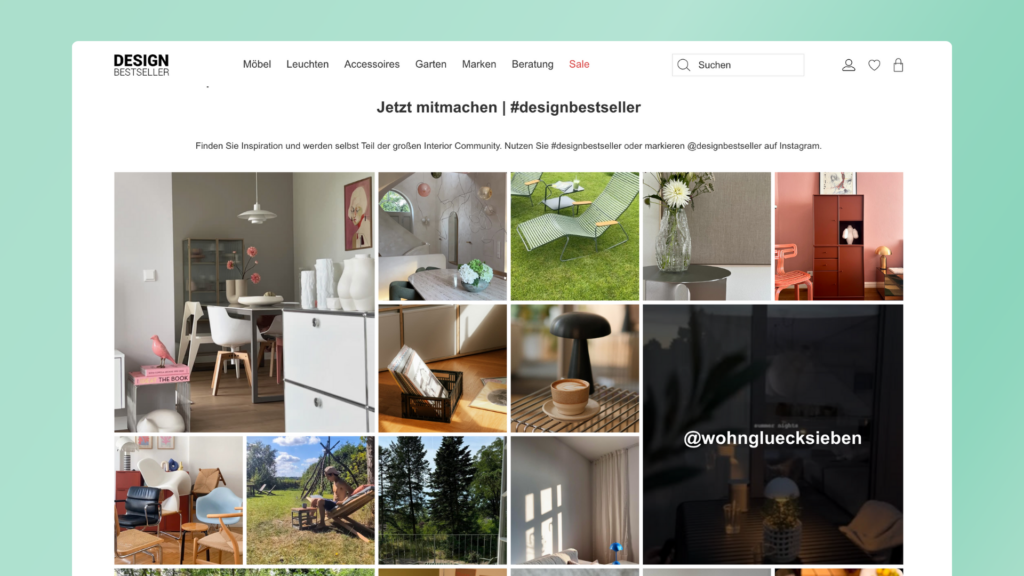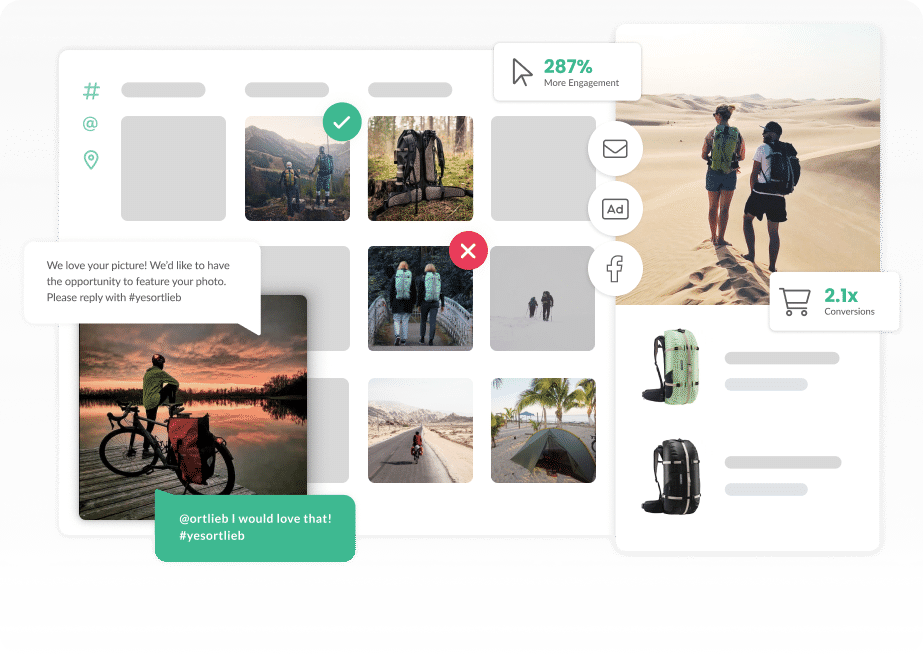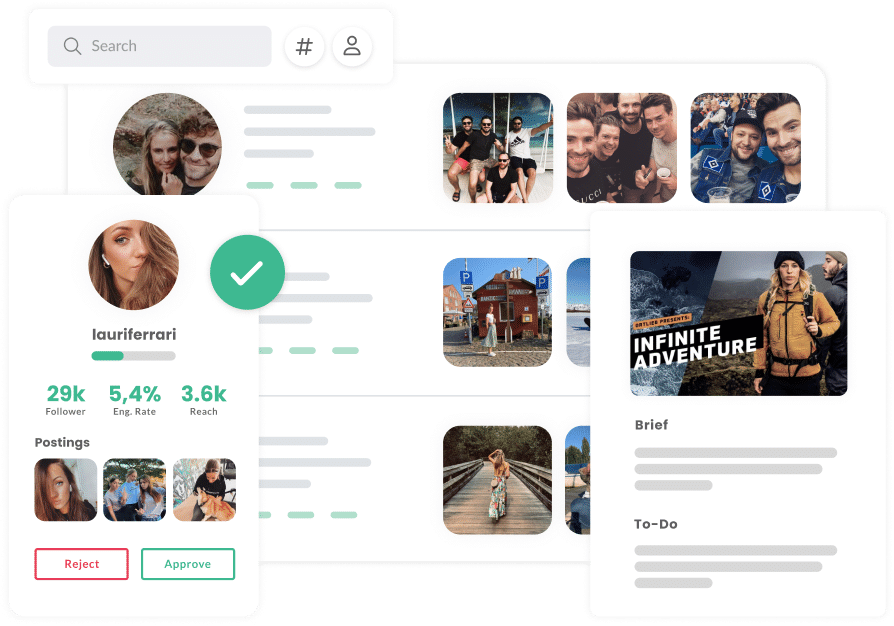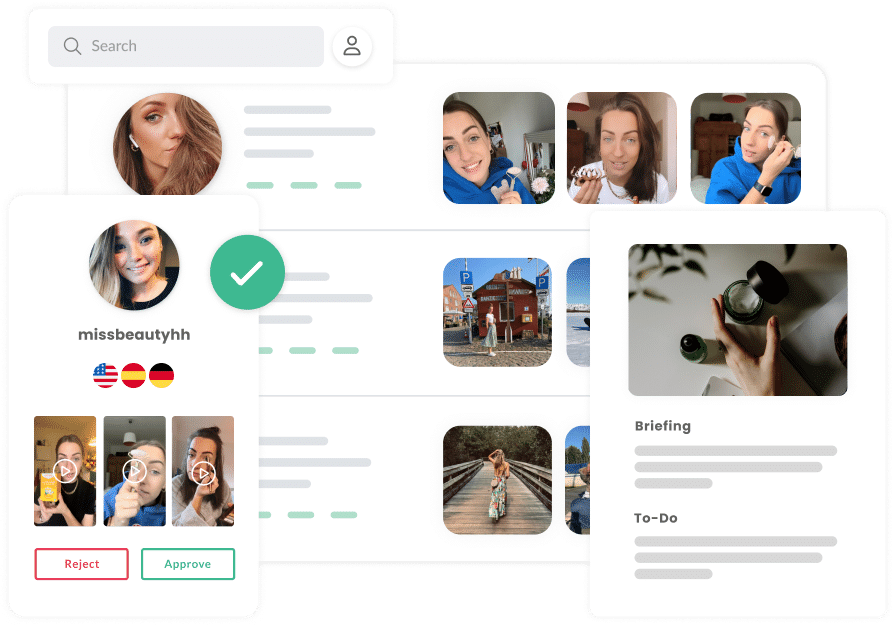Anyone looking for the latest marketing trends can no longer ignore user-generated content (UGC). But what is behind the buzzword? How does UGC differ from other forms of content and how can it best be used to build a strong brand? We have summarized all of this for you in this article.
What is User-Generated-Content (UGC)?
UGC includes all content that is created and shared online by users. This includes social media posts, reviews, blog posts, videos and photos. This content is particularly valuable for use in marketing, as it comes from the users who actually use a product and not from a brand itself. This means that the content is usually particularly authentic, credible and convincing.
Incidentally, UGC originated in the 1990s, primarily in the form of letters to the editor and then, from the 2000s, also as online reviews. Nowadays, the term UGC is often used synonymously for content created by creators explicitly for brands for use in social ads.
Step 1: Get to know your own Community
To use UGC effectively for your brand, the first step is to look at your existing community and, in particular, the content that your customers share. You should ask yourself the following questions during your research::
- Which platforms do your customers use most frequently?
- What kind of content do they share (e.g. photos, videos, reviews)?
- Which topics do they address particularly frequently?
- Why do they share certain content (e.g. to share experiences, make recommendations, report problems)?
- What kind of content do they react to?
- What questions about your products are asked again and again?
By answering these points for yourself, you will find out which topics your target group is interested in and can address them all the more specifically with marketing measures. By showing that you are actively aware of their interests and needs and responding to them, you also encourage your customers to share more content.

Lade dir jetzt unsere Checkliste herunter, um die wichtigsten Infos und To-dos von Social Proof auf einen Blick parat zu haben.
Step 2: Analyze your Competitors
Another important step, as in so many other areas, is to analyze your competitors. Pay attention to whether and how other brands are using UGC and what strategies they are pursuing. Key questions to ask are:
- Do your competitors use UGC, if so, what does the content look like?
- Which channels do you use most intensively to involve UGC?
- How actively do they involve their community?
Such an analysis can provide valuable insights and help you to optimize your own strategies and avoid mistakes.
Step 3: Collect UGC or create Campaigns for targeted Content Production
You have various options for integrating user-generated content into your marketing strategy. If you already have a large and active community, the quickest way to benefit is to request usage rights for existing content and actively incorporate your customers’ content. However, be sure to pay attention to data protection and image rights to be on the safe side.
If you don’t have a particularly active community yet, for example because your brand is only just establishing itself on the market, another option is to approach individual creators from your community and commission them to create content for your brand. We have summarized various approaches on how you can start the search for suitable creators in another blog post.
Step 4: Use UGC correctly for your Brand
As a brand, you only really benefit from UGC if you actively integrate it into your marketing strategy. For example, by reposting the content on your brand’s social media channels and linking to the original creator. This not only makes the creator feel valued, but also creates an incentive for other users to interact with your brand and link to it in content

Of course, content that comes from social media doesn’t have to stay on social media alone. Another way to efficiently integrate UGC is to use interactive Shop The Look streams on your website. Ideally, you should also integrate direct product links to keep the path from inspiration to purchase as short as possible for visitors to your site

This is why Customer Feedback in the form of UGC is so important
Used correctly, UGC has many advantages for your brand. Authentic user-generated content can help build trust in your community, increase the visibility of your brand and strengthen customer loyalty.
Building Trust
UGC is perceived as more authentic and credible than traditional advertising. Customers trust the experiences of other users and take them into account when making their purchasing decisions. Recent studies show this: For example, 93% of consumers look at ratings and reviews from other buyers before making a purchase to convince themselves to buy.
Increase Reach
An active community that regularly shares content on social media automatically increases the reach of your brand and therefore also contributes to greater visibility. Sharing content by users increases the reach organically. This automatically means more presence for your brand, which in turn means that more users become aware of your brand.
Customer Involvement:
By actively integrating your community’s UGC into your marketing, you convey appreciation and closeness to your customers. This direct interaction between you as a brand and your target group can have a positive effect on customer loyalty. UGC promotes customer interaction and engagement, which leads to stronger customer loyalty.
.
Conclusion
User-generated content (UGC) is crucial for brand managers as it provides authentic and credible insights into the brand from the customer’s perspective. By interacting with and reposting UGC, companies show that they value their customers and take their opinions seriously, which can positively influence the brand image and strengthen customer loyalty.
In addition, the integration of UGC into the branding strategy increases the organic reach and visibility of the brand, as users are encouraged to share their experiences and thus act as authentic brand ambassadors. This strategy not only leads to increased brand awareness, but also to a deeper understanding of customer needs and preferences, which in turn provides valuable insights for the further development of products and marketing strategies.










